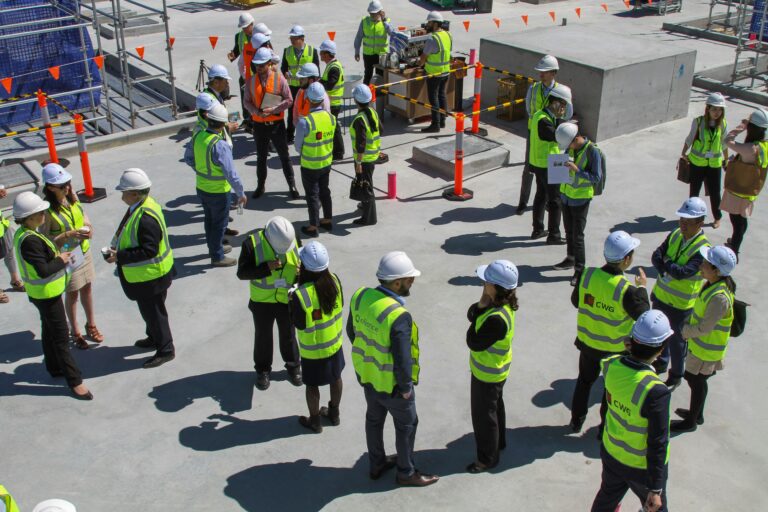Did you know that 84% of supply chain managers report low contract visibility as one of their biggest bottlenecks?
Such challenges call for radical changes, and the procurement industry is, in fact, evolving quite fast. Today, we can confidentially say that gone are the days when we relied solely on paper contracts; and with this shift, terms like CLM are now making waves in the industry.
But what is CLM?
CLM stands for Contract Lifecycle Management, and it refers to the comprehensive process of managing a contract from initiation through execution, compliance, and renewal. Please note, CLM is not to be confused with Vendor Contract Management, which is specifically tailored to manage contracts with vendors, focusing on supplier performance, compliance with terms, and fostering strong vendor relationships.
In this article, we’ll delve deeper into the nuances of CLM, shedding light on its different stages, main benefits, and we will share some tips on choosing the best CLM system for your business.
Here are the topics we will cover:
- Stages Of The Contract Lifecycle
- 4 Benefits Of Relying On A CLM System
- How To Choose The Best CLM Software
Stages Of The Contract Lifecycle
From writing to signature, a contract goes through various phases.
Here are the main 9 stages of CLM:
- Contract Request: At the beginning of any contractual agreement, there is always a need. This need could stem from various procurement requirements, like the desire to secure a new vendor or purchase a new batch of supplies. This first stage involves outlining the purpose of your contract, specifying the parties involved, and determining the scope. Once you have a clear understanding between all stakeholders and these details are set, a formal request is put forward.
- Generating the contract: Think of this as the drafting phase. Here, the blueprint of the relationship is laid out. Terms, conditions, delivery dates, and payment methods are discussed. For example, you may negotiate a clause about timely delivery during peak holiday seasons. Your legal team plays a key role at this stage, guaranteeing compliance with laws and protecting your interests.
- Negotiating terms: Both parties come to the table with their expectations. For example, you might push for better prices or faster shipping times, while your supplier might negotiate for larger order quantities. Negotiations seek a middle ground, aiming for a win-win outcome.
- Review and Approval: Even after both parties have reached a consensus, before your contract becomes operational it should undergo a thorough review. For example, imagine a hospital entering into an agreement with a supplier for Personal Protective Equipment (PPE) supplies, given the critical demand for these in healthcare settings. The hospital’s procurement manager must ensure that the PPE meets all safety and quality standards, the supply timelines are realistic, and there are no hidden costs or conditions. All regulatory clauses, such as those ensuring the equipment meets international health standards, should be precisely articulated in the contract. And before the contract is executed, every stakeholder, from the procurement department to quality assurance and even the legal team, should give their nod of approval.
- Signature: At this stage, the contract finally takes its final form. All parties involved put their seal of approval, making the document legally binding.
- Contract close-out or renewal: As contracts approach their end, there’s a decision to be made. Perhaps after supplying PPE for years, the supplier’s rates are no longer competitive, or your requirements have changed. Here, the contract can be renewed, renegotiated, or terminated based on mutual benefit and performance.
- Storing and searching contracts: Once signed, contracts need a safe home. Thanks to modern CLM systems, businesses no longer rely on old filing cabinets. Instead, you can now make good use of digital repositories where every contractual document is easily accessible. Imagine needing to refer to a specific clause in a multi-year agreement; CLM systems with their digital storage makes this a matter of a few clicks.
- Reporting: Contracts, though set on paper, are dynamic in practice, which means that you should always have a regular monitoring and reporting systems in place. For instance, when you evaluate a long-term contract with a new supplier, a continual assessment will allow you to gauge the contract’s effectiveness. This way you can determine if it’s beneficial to proceed with the same contract or or if there’s a need to renegotiate more suitable terms.
- Renewal or Disposition: Based on your reports and performance data, you can either decide to renew the contract incorporating any required changes, or terminate it, ensuring all pending obligations are sorted.
All in all, whether you’re a procurement manager or a business owner, understanding what is CLM, what are its stages, and how to leverage a CLM system can significantly facilitate your contractual agreements and partnerships.
4 Benefits Of Relying On A CLM System
Have you ever been caught in the whirlwind of paperwork and missed an important contract detail?
If that’s the case, the implementation of a CLM system can safeguard you from similar situations and provide numerous other benefits.
Here are the 4 main benefits of utilizing a CLM system:
- Increase automation and efficiency: At the heart of CLM systems lies the promise of automating the mundane. Think of a procurement manager drowned in stacks of paper, manually drafting and reviewing every single purchase agreement. With an efficient CLM system, such time-consuming tasks are eliminated. Document creation, approval, execution, and even archiving become streamlined. For instance, instead of crafting a contract from scratch, you can leverage pre-existing templates, speeding up the initial phases of the contract management process. The benefits? Reduced paperwork, fewer errors, and faster turnarounds for both buyers and sellers.
- Improved Compliance: A good CLM system will help you navigate the intricacies of contract management without breaking any rules. With its pre-approved templates and clause libraries, the system guarantees every contract adheres to strict construction and environmental standards. Additionally, automated reminders for renewals and comprehensive audit trails can help you maintain a transparent contract lifecycle. Meanwhile, access controls guarantee that only authorized individuals can access or modify critical data, strengthening data protection.
- Improved Negotiations & Cost Savings: Imagine you’re negotiating rates with a long-term supplier. With the insights provided by a CLM system, you can instantly pull up historical data, current market rates, and predictive analytics to strike a better deal. Moreover, the CLM software’s real-time access to suppliers’ pricing terms allows for a data-driven negotiation, ensuring you get the best rates. Last but not least, key features like auto-reminders for renewals or invoice dates, prevents costly oversights, whether it’s a missed discount opportunity or an unintentional breach of contract terms.
- Greater Visibility: Have you ever been juggling multiple vendor contracts? Without a structured contract management process, the sheer volume can lead to chaos. However, with a robust CLM system, you and every stakeholder, from the finance team to the operations head, gains a 360-degree view of all contracts. This doesn’t just mean viewing the documents but truly understanding the milestones, commitments, and potential bottlenecks. For instance, if a particular vendor consistently delays deliveries, the CLM system can flag this trend, allowing you and your team to address the issue proactively.
All in all, a good Contract Lifecycle Management system will help you get a clear picture of your contractual obligations and performance, fostering better collaboration, decision-making and minizing risks.
That being said, every business is different. So, how do you choose the best CLM platform for your needs? We will share some key tips in the next section.
How To Choose The Best CLM Software
With myriad options on the market finding the right CLM software is no small feat.
So, how can you identify the perfect one for your needs?
You can consider the following key features to guide your selection:
- Comprehensive Features: At the core of the CLM meaning lies its ability to manage the entire contract management process seamlessly. This means that your CLM system of choice should cater to all stages of the contract lifecycle management. Additionally, your CLM system should simplify contract drafting with pre-approved clauses and industry-specific templates. And finally, the ideal system should come provided with alerts and notifications that keep you posted on pivotal milestones, such as renewal dates or escalations, ensuring no detail gets overlooked.
- Automation Capabilities: As we covered in the previous section, one of the main benefits of CLM lies in automating mundane tasks. Instead of manually tracking each contract’s renewal, the ideal CLM system should send you automatic notifications. Similarly, auto-populating data fields based on previously input data can be a game-changer for a busy procurement manager.
- Integration Capabilities: As the industry shifts more and more into digital procurement, think about the various software tools you use daily. Your CLM system should seamlessly integrate with these, be it accounting software or enterprise resource planning systems, making the data flow cohesive.
- Support Services & Vendor Reputation: As with all software and digital platform, you may encounter some bumps in the road. This is why your chosen CLM system should have a responsive support service. And before you make your final decision, don’t forget to delve a bit into the vendor’s history. Positive testimonials and a history of quality service can be a beacon of trust and assurance in your selection process.
- Security Protocols: Confidentiality and cyber security in procurement are non-negotiable, especially when cyber threats are on the rise. Whether you’re storing a high-stakes contract or a routine supplier agreement, your CLM system should come with robust security capabilities to safeguard your data.
- Usability: Last but not least, it doesn’t matter how cutting-edge a CLM software is; it will be of no use if utilizing it feels like deciphering an alien language. Always opt for systems that are intuitive for yourself, your team, and other stakeholders in your company.
All in all, make sure you equip yourself with a comprehensive and intuitive tool that not only simplifies the contract lifecycle management process but also integrates with your other tools. This way, you will be able to streamline your whole procurement strategy.

Conclusion
Navigating the intricacies of contract management can be an overwhelming task, but that’s exactly where Contract Lifecycle Management (CLM) steps in.
Embracing a proficient CLM system can be transformative, offering advantages like automated workflows, improved compliance, and enhanced vendor relationships. However, the key always lies in selecting a system that aligns with your unique business needs and integrates seamlessly with your current operational tools.
Remember, contracts are the backbone of your procurement, and managing them effectively with a robust CLM platform can be the difference between smooth operations and missed opportunities. So, take the time to research, evaluate, and invest in a CLM solution that propels your business forward.











